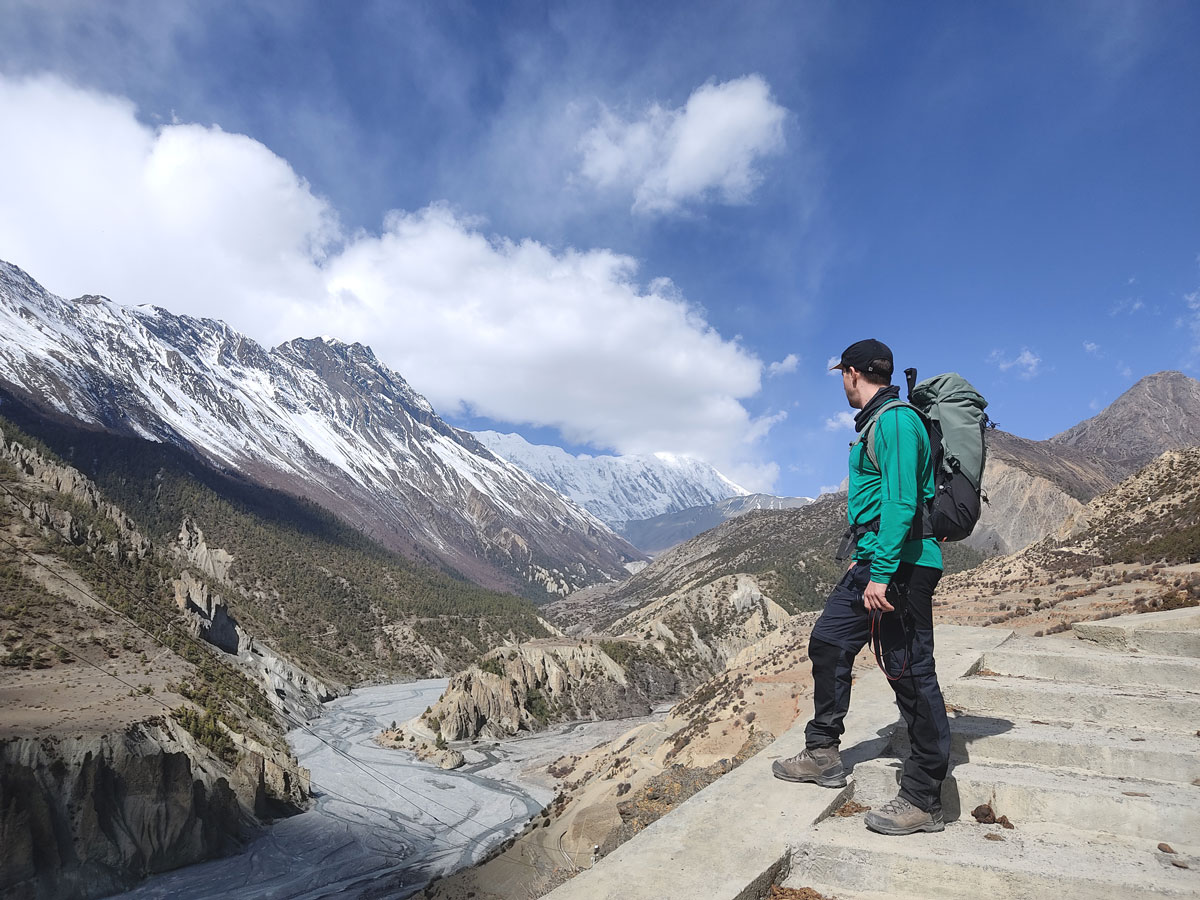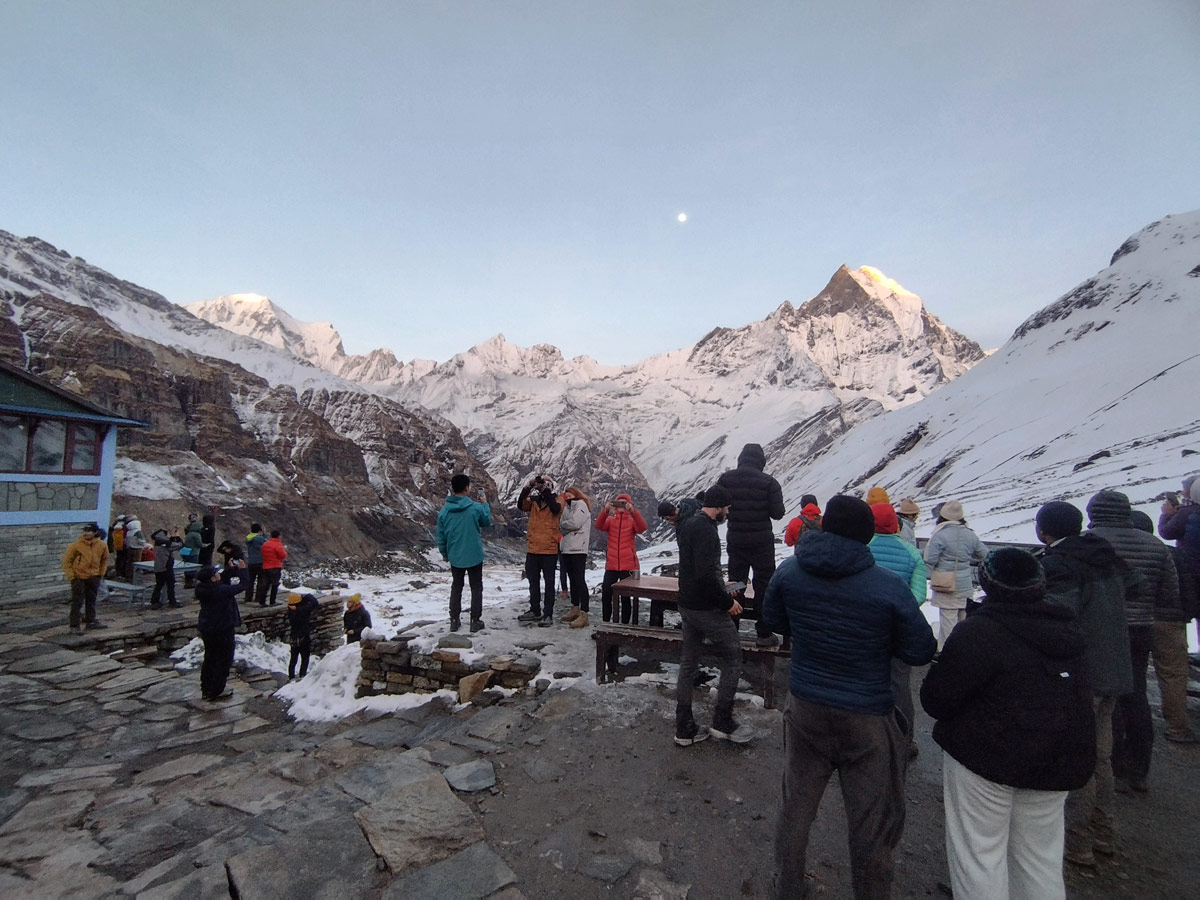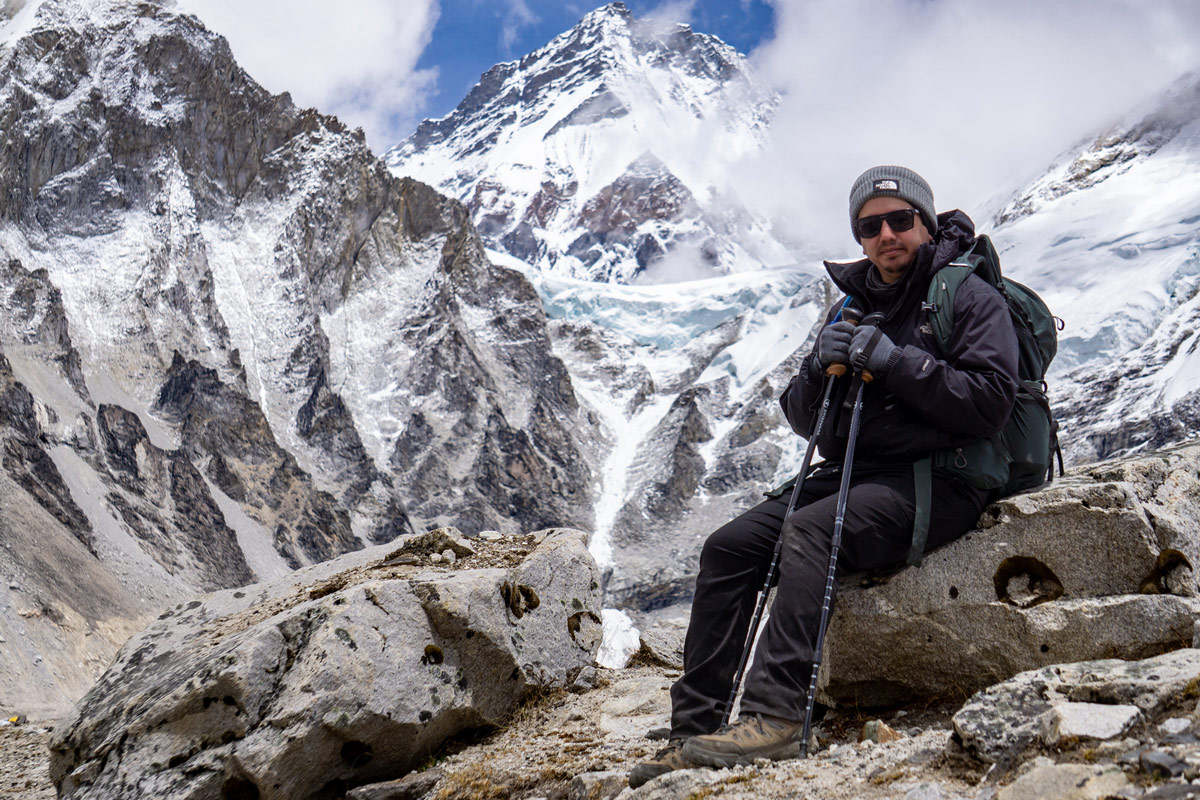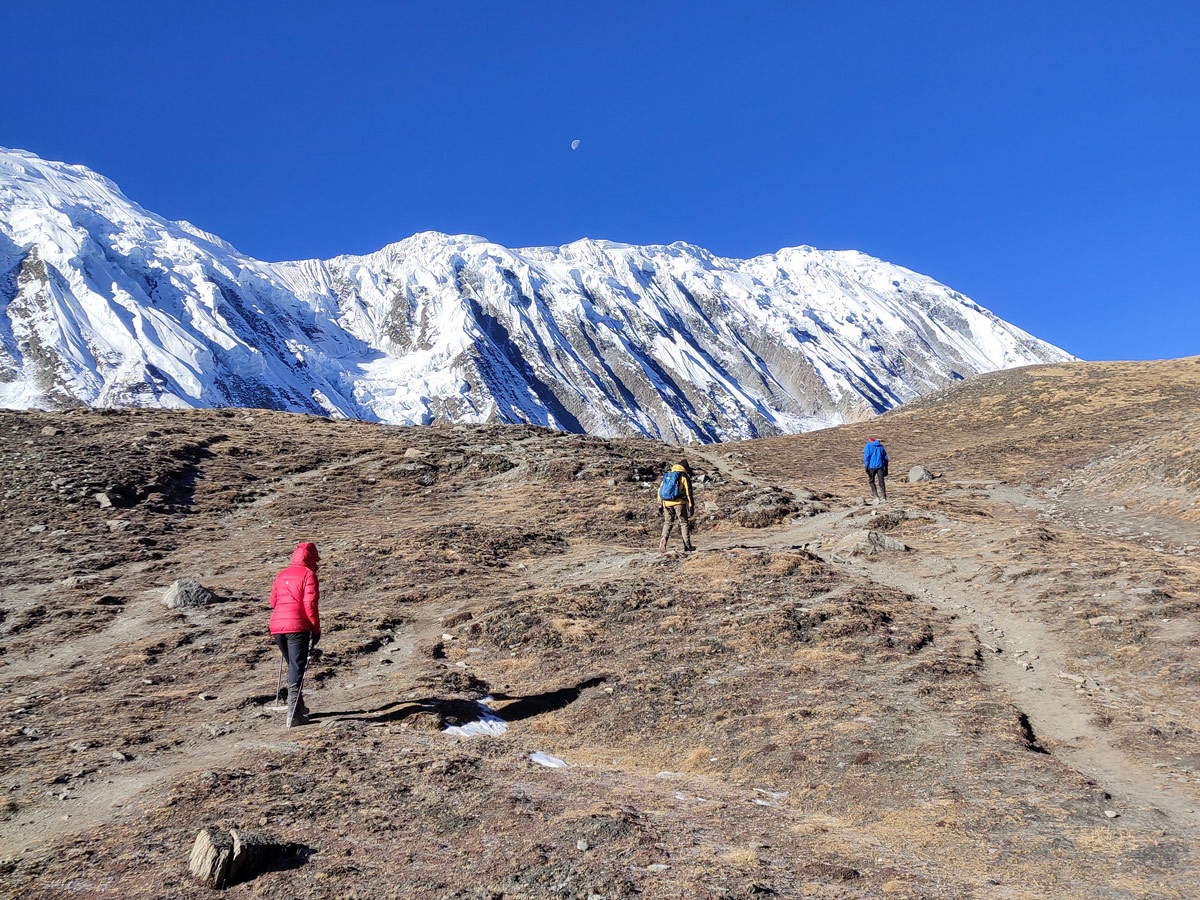The perfect blend of a variety of landscapes, exciting adventures, breathtaking beauty, and heartwarming cultures, the Annapurna Circuit trek is a legendary trek that gives you all the reasons why you should trek it.
While details regarding other aspects of the trek are readily available, questions regarding Annapurna Circuit trek packing list are a common dilemma amongst the trekkers as nothing ever seems to feel like enough and you end up overpacking.
Therefore, in this blog, we have curated a detailed packing list best suited for your iconic adventure in the majestic Annapurna region of Nepal, which is also famed as one of the best treks in the world.
Understanding the Annapurna Circuit Trek
The Annapurna Circuit trek is an iconic yet unique high-altitude adventure with its own set of challenges which requires a different and custom packing list. Therefore, understanding the Annapurna Circuit trek is important to know what to pack.
This trek takes you through a wide range of landscapes and takes you to high altitudes as far as 5,416 meters (17,769 feet) at Thorong La Pass.
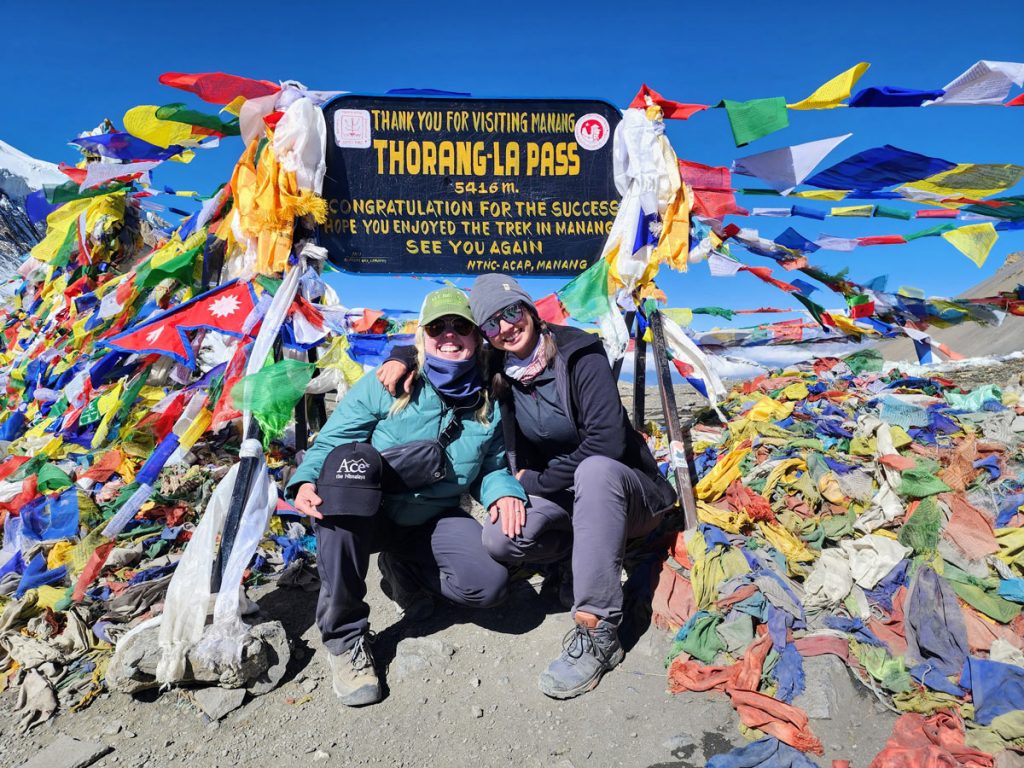
You will traverse through unique river valleys and lush forests before ascending higher to glacial valleys and unique high-altitude deserts throughout the Annapurna Circuit trek distance.
Based on the season of your Annapurna Circuit trek, the temperature on the Annapurna Circuit trek is also unpredictable with unexpected rainfall and snowfall.
It is also a lengthy adventure covering around 190 to 210 km based on your itinerary and you will be covering it within around 3 weeks.
Given these factors, challenges like altitude sickness, tiredness, and more might come your way.
To tackle these challenges, you must pack thoroughly and include all the gear and accessories for a successful trek.
The Essentials
Backpack and Daypack
A sturdy backpack is the most important thing to have during the trek as it stores all your other essentials. Make sure to invest in a high-quality backpack with enough space for all the items while also being lightweight.
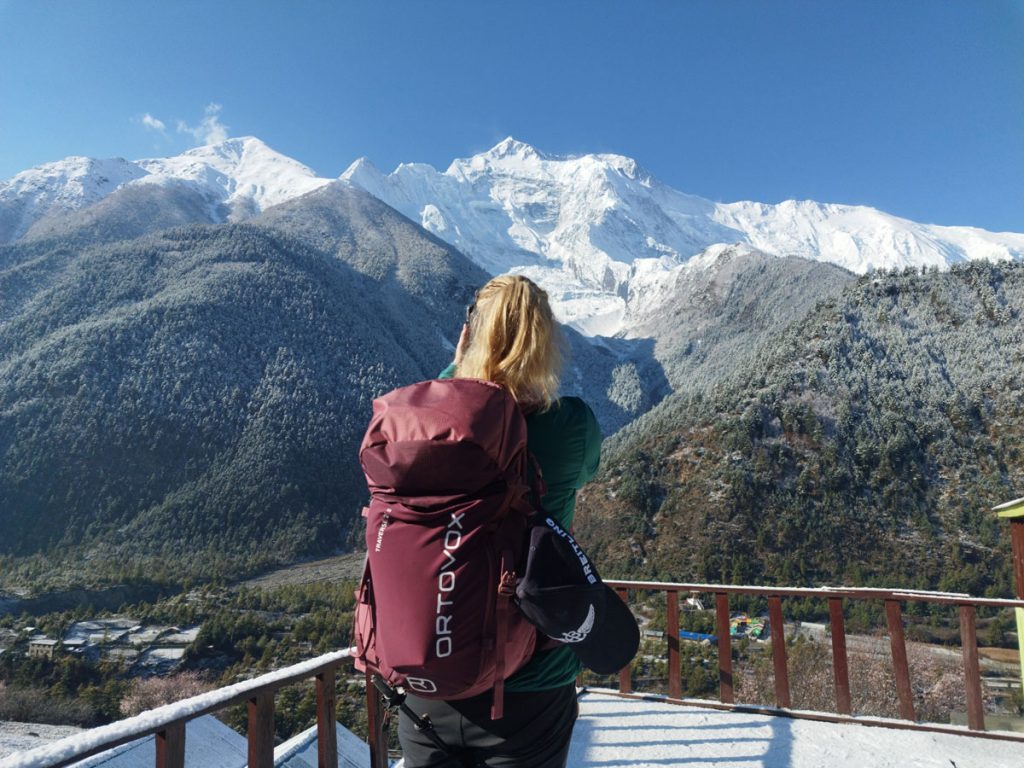
Organize your backpack well and get a waterproof backpack of a considerably big size and with durable straps. At Ace the Himalaya, we provide you with a free 80-liter duffel bag to store all your belongings not required for the day and it will be carried by the porter.
Invest in a sturdy daypack too of around 30 to 50 liters to store all the essentials that you might need throughout the day like cash, documents, water bottles, snacks, camera, etc. Do not forget to carry a rain cover for your bag.
Sleeping Gear
A non-negotiable thing to carry is good quality sleeping gear for a more hygienic and cozy experience beyond the beds at the teahouses. Carry sleeping gear with temperature ratings suitable for the Annapurna Circuit trek.
You can either purchase or rent a four-season sleeping bag to keep you warm amidst the freezing temperatures of the chilly Annapurna region.
Top it up with an additional layer of warmth and hygiene with a sleeping bag liner as it keeps you protected against the adversities of the trek like snowfall.
Ace the Himalaya provides you good rental options at an additional cost which is a much more practical approach rather than purchasing.
Puffy Down Jacket
To flourish in the freezing temperatures of the Annapurna Circuit trek, carry a puffy down jacket that traps your body heat to provide an insulating layer of warmth and keep you warm and cozy during the trek.
Purchase branded options like Montbell, Mountain Hardwear, or a reliable replacement. If you are a non-frequent trekker, renting is a much better option.
Ace the Himalaya also provides you with an option to rent the puffy down jackets at a reasonable additional cost.
Clothing for All Conditions
Traversing through several landscapes and climatic conditions, you will be exposed to several weather-related challenges. To overcome them, the key is layering your clothes.
It is the best way to deal with temperature fluctuations as you can add and remove the layers according to the need of the hour. You can remove a layer in case of extreme heat and you can add a layer or two in case of freezing temperatures or snowfall.
Upper Body
Sun hat or Cap
A boon during the daytime trekking in the scorching heat is a sun hat or cap to protect you from direct sunlight for long hours and prevent any damage like sunburn or even heat strokes.
You can opt for sun hats with straps to keep them in place in case of heavy winds during trekking. Ace the Himalaya provides you with a free baseball cap during the pre-trip meeting in Kathmandu.
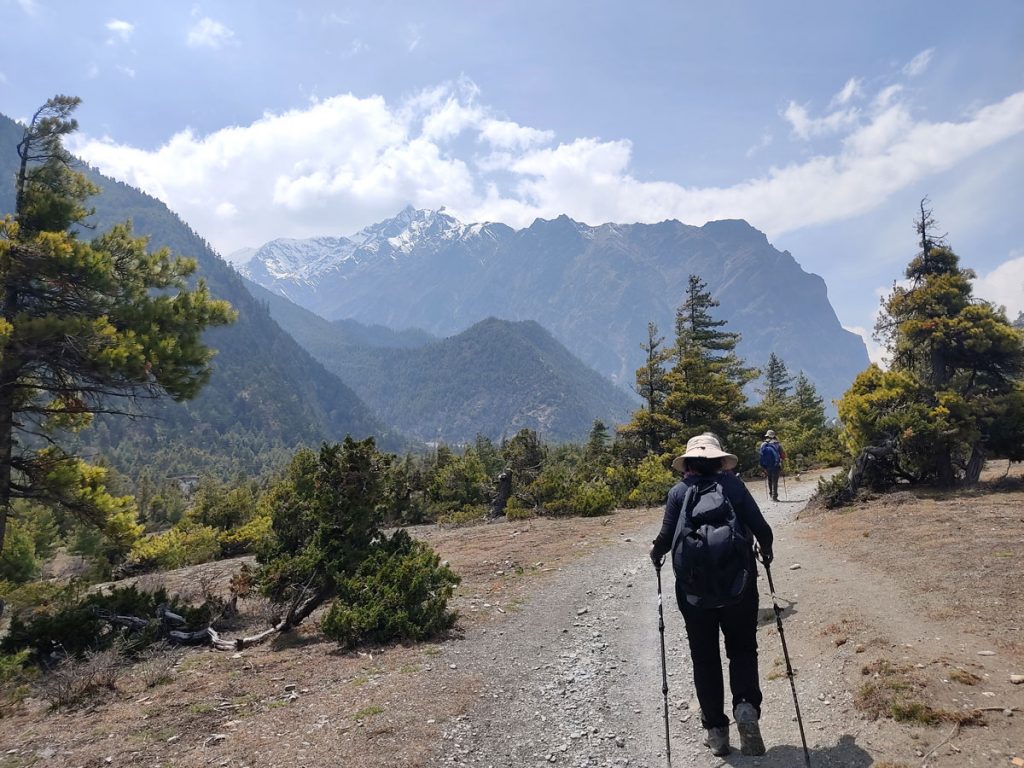
As you will be trekking during the daytime, you will be exposed to direct sunlight for long hours. Therefore, carry a sun hat or a cap to protect yourself from sunburn and to reduce the chances of heat strokes.
Knitted hat
Temperatures can get quite chilly as well as extreme at high altitudes on the Annapurna Circuit. To keep your head warm, get a knitted hat or a beanie, especially during freezing mornings and chilly evenings.
Scarf or Neck Gaiter
A neck gaiter adds a versatile layer of protection to your clothing essentials as it can be worn as a scarf, a headband, or even a face mask.
It keeps you warm in cold temperatures while also protecting you from sunburn and giving you dust protection.
Torso
Technical Fabric Base Layer
A tricky challenge while on the Annapurna Circuit trek is temperature regulation as you will be trekking in the scorching sun sweating one moment and the next minute you might be shivering due to snowfall or sudden winds.
To overcome this, you must pack in good base layers to keep you comfortable irrespective of the condition. Technical fabrics like merino wool or synthetic fabrics are the best choice.
These layers stay in direct contact with your skin and can help in moisture wicking to keep you free of odor while being breathable and regulating your body temperature. Carry both full-sleeved and short-sleeved options.
Waterproof and Windproof Shell
Given the unpredictable weather in the Himalayas, it is always safer to carry a shield against the elements. A good quality waterproof and windproof shell jacket protects you from sudden rain or snow while trekking at high altitudes.
It also protects you from the high-flowing wind, especially while crossing the Thorong La Pass. Picking an option with a hood and a breathable layer gives more protection with added comfort.
Fleece Jacket or Pullover
Tackling the freezing temperatures at high altitudes is one of the significant challenges while on the Annapurna Circuit trek. You wouldn’t want to carry lots of clothes and increase the weight of your backpack.
That’s where a fleece jacket comes into the picture as it can keep you warm without adding much weight or bulkiness to your Annapurna Circuit trek packing list. It traps in the warm air to provide an insulating layer of warmth and is easy to store when not in use.
Lower Body
Hiking Pants
Getting comfortable hiking pants is very important as these pants prove to be your workhorses throughout the trek. So, get pants or thermal leggings made up of technical fabric like merino wool.
Moisture-wicking material can help prevent chafing and dries faster after rain or sweating. The best bet is to invest in convertible pants as they have an option to zip off the pants and instantly make it into hiking shorts for more comfort.
Hiking Shorts
Hiking shorts are a better alternative while trekking during warmer days as wearing full pants might lead to discomfort and even heat stroke at times due to no space for air to pass out.
These are comfortable and even give a space-saving and lightweight option instead of leggings.
Waterproof and Windproof Shell Pants
Just like the torso, pack waterproof and windproof shell layers for your lower body too to protect you from dust, rain, snow, heavy winds, insects, as well as any other hazard you might come across while on the Annapurna Circuit trail.
Comfortable Pants
The fit-to-body clothing although comfortable for trekking might not be as comfortable during nighttime while you rest at the teahouses. Therefore, pack a pair of comfortable pants or trousers.
You can use the same for taking a walk around the villages or to get a comfortable sleep too. Opt for warmer fabrics as temperatures during nighttime are usually challenging on the Annapurna circuit.
Undergarments
While it might seem trivial, packing the correct type of underwear is important during trekking. Yes, you are the best judge when it comes to undergarments, but keep certain things in mind for a more comfortable experience:
- Laundry options might not be readily available while on the trek so make sure to pack enough undergarments and some spares too instead of buying new ones during the trek.
- Get undergarments with breathable fabric for more comfort.
- Opt for technical fabric and quick-drying underwear to prevent issues like chafing or rashes.
- Carry an extra bag to keep the used undergarments.
- For the support required during trekking, sports bras are best for women.
- Carry comfortable and thermal sleeping clothes and pajamas
Footwear
Liner Socks
Like your entire body, it is better to layer your footwear too for a more comfortable trekking experience. Liner socks should be your first layer as it is made up of technical fabric.
Although optional, wearing liner socks is advisable as it helps in wicking away the moisture and prevents blisters caused by friction because of long hours of walking.
Hiking Socks
The layer after the liner socks should be good quality hiking socks as they too help in preventing blisters and also allow you for a smoother and quicker walk along the trails.
Invest in a pair with padding for extra cushioning to prevent soreness and give the required extra comfort for longer days.
Woolen Socks
The requirement for woolen socks depends on the season during which you are trekking the Annapurna Circuit. While it might not be necessary during warmer months, it becomes compulsory during the months of winter.
Temperatures in the higher altitudes of the circuit go beyond freezing point which makes walking really difficult and leaves your feet numb and sore due to cold. You might also experience swollen feet, frost nips, or frostbites.
In such circumstances, woolen socks can help keep your feet warm, aiding in your trek.
Hiking Boots
Trekking the almost 200 km long Annapurna Circuit trek is not a small feat and hiking boots are the unsung heroes of your trek. You must invest in good quality, comfortable, and sturdy hiking boots.
Opt for durable materials and stiff ankle support for a comfortable trek and to prevent mishaps like ankle rolling. Look for a sole with a good grip and also check if the shoe forms any pressure spots.
Break your shoes well in advance before the trek to prevent issues like soreness, blisters, hot patches, and swelling of your feet. Waterproof boots are always a worthy upgrade.
Casual Shoes
A long day of trekking calls for a time out where you allow your feet to relax and breathe. Pack casual shoes, sandals, or Crocs for the same as it lets you take a comfortable walk in and around teahouses.
Ice Cleats
Some sections of the Annapurna Circuit like the Thorong La Pass might be covered in snow which can be difficult to tackle with normal hiking boots causing you to slip.
In such cases, spikes or ice cleats help you get the required grip for an easier and safer walk across the Annapurna Circuit trail.
Gaiter
Whether you have waterproof boots or not, gaiters are a good addition to your Annapurna Circuit trek packing list.
Although optional, they give an additional layer of protection to your legs as well as feet and prevent anything from entering your trousers while walking through the dense undergrowth.
Gaiters also protect you against the dush, rain, snow, water, and any other debris and insects.
Hand Protection
Damage to the exposed parts of your body like your hands is a big possibility during the Annapurna Circuit trek due to the long hours of exposure to sunlight. Therefore, it is advisable to go the extra mile and protect them.
Liner Gloves
Liner gloves, like other base layers, provide a moisture-wicking and insulating layer of protection for your hands keeping them warm and comfortable during the trek along with being breathable.
Shell Gloves
Giving you protection against the rain, snow, and other harsh conditions of the trek along with providing an extra layer of warmth to prevent frost nips and frost bites, shell gloves are a valuable addition too.
Health and Hygiene
First Aid Kit
Although the Annapurna Circuit trek is considered safe, you might face health ailments like minor injuries, cuts, or even sickness like fever and more. Carry a foolproof first aid kit for the same. Carry prescribed medications too, if any. Refer to the checklist below:
- Painkiller
- A broad-spectrum antibiotic
- Cough syrup
- Antipyretics
- Bismuth subsalicylate for indigestion or diarrhea
- 125 mg or 250 mg Acetazolamide tablets for altitude sickness (Consult your doctor)
- Band-aids, gauze, tape, blister plaster
- Antibiotic ointment
- Crepe bandages
- Prescribed medications, if any
In context of Ace the Himalaya, our guides are trained in first aid, and they carry all the basic medicines during the trek
Sun Protection
You are expected to walk for long hours every day on the Annapurna Circuit as the sun rays at the high altitude can be quite intense causing damage to your skin and face with issues like sunburn.
A broad-spectrum high SPF sunscreen comes in handy to tackle this giving you protection against UVA as well as UVB. Apply it to all the exposed skin and reapply after two hours or after sweating.
While other parts like your hands, neck, and ears, can be protected with sunscreen, your lips need protection too as they might get chapped or burnt due to the intense sunlight.
Therefore, make sure to carry a good quality lip balm from a trusted brand with an SPF to keep your lips protected.
Insect Repellant Cream
One big challenge, especially if you are trekking the Annapurna Circuit during monsoon, is that the trail is infested with leeches among several other insects. Even while at the teahouses, you will still encounter tons of mosquitoes.
Therefore, to be on the safer side, it is best to carry an insect-repellant cream or a mosquito-repellant cream to prevent any unwanted diseases.
Personal Hygiene
With limited facilities for showers and laundry due to the challenging conditions of the Annapurna Circuit trek, as you go higher, it is important to take care of your personal hygiene and carry essentials for the same.
- Toiletries (Preferably biodegradable) – Soap, Toothbrush, Toothpaste
- Toilet Paper
- Wet Wipes – Normal and Antiseptic
- Hand Sanitizer
- Quick drying towel
Make sure to carry these items out as certain things like wet wipes do not decompose easily and can affect the fragile ecosystem.
Women’s Hygiene
Carrying hygiene essentials for women is a must as you might not get easy access to sanitary products like pads while on the trek as you will be traveling through some of the remote corners of the country.
Make sure to pack enough sanitary products and opt for environment-friendly products like menstrual cups or reusable pads as they are a more convenient option too.
Snacks
Being nutritious is the key to completing the Annapurna Circuit trek comfortably. While the food on the circuit is very nourishing and delicious, you might want to carry some snacks for munching on while walking.
It helps to give you the required energy boost for the trek while also avoiding palate fatigue. Carry calorie-rich snacks and lots of water and rehydration salts.
Additional Gear
Trekking Poles
The long hours of walking might be strenuous on your knees and cause discomfort. Trekking poles help you give support to your knees while also allowing shock absorption and maintaining balance on the trail.
They reduce the strain on your knees and can make your trek much more comfortable during ascents and well as descents.
Sunglasses
The snow-blanketed trail, although beautiful, can be harmful to your eyes due to the snow glare combined with harmful and intense sunlight at a high altitude. It can even cause snow blindness.
Carry a good pair of polarized sunglasses to protect your eyes. You can also carry convertible glasses helping with your vision as well as protection.
Headlamp
In certain segments of the trek, like the Ghorepani to poonhill section, you will have to start trekking early, and on some days you might still be trekking after sunset. For enhanced visibility and safety, carry a headlamp.
Carry one with spare batteries and a red-light mode for enhanced visibility in the forest areas and allows you to navigate the trail while being hands-free and without straining your eyes.
Important Documents
Documents like the permits and your personal identifications (original and copies) are very important while on the Annapurna Circuit trek. So make sure to carry all of them safely and recheck thoroughly. Read below to know what to carry:
- Passport
- Trekking permits (TIMS, ACAP)
- Airline Tickets (Please leave a copy at our office in Kathmandu. This can be useful if there is a change in the date of the flight)
- Extra copies of passport-size photos
- Travel insurance documents
Handy Extras
Besides the main packing list, carrying some extra items might make your experience more comfortable and enjoyable. While these are completely optional, you can pick some of these items and have a hassle-free journey:
- Reusable water bottle
- Hydration bladder
- Water purification tablets or small filters
- Pillowcase
- Waterproof/dry bags for carrying important documents and money
- Rain covers/Bag covers
- Navigation devices
- Camera and Mobile Phone
- Communication devices
- Power bank or extra batteries
- Solar Chargers
- Multi-tool
- Thermos for hot water
- Journal or diary to record your entire experience
- Cards
- Book / E-reader
- Binoculars
- Pee bottle / Pee funnel for women
- Whistle
- Swimsuit (For Tatopani)
- Maps and compass
Tips for Compiling Annapurna Circuit Trek Packing List
- Pack smartly while ensuring proper weight distribution and try keeping things as lightweight as possible by using options like packing cubes. Watch online videos for guidance.
- Embrace the ‘leave no trace’ policy as you will be going to a fragile ecosystem. Carry reusable and biodegradable items and bring everything out and dispose of them at designated spots.
- Opt for clothing items and gear that give you an option of multifunctionality like convertible pants and quick-drying clothing. Make sure to carry some spares in case of any emergency during the trek.
- Use renewable sources like solar charges for charging if you are carrying your gadgets on the trek. Engage in responsible and minimal phone usage and indulge completely in the grandeur of nature!
- Test your gear functionality before packing them for the trek to not get caught off guard.
